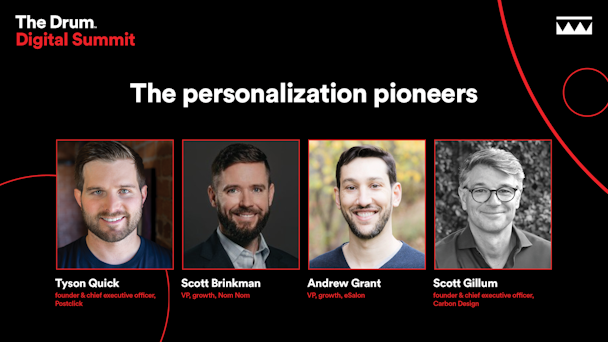Pandemic boom in online shopping drives the need for personalization
Watch 'The Personalization Pioneers' panel on demand.

View ‘The personalization pioneers' panel discussion on demand
One of the unexpected effects of the Covid-19 pandemic has been to increase competition among eCommerce companies. As more people do more of their shopping online, companies have followed them, increasing the choice available to consumers but making it harder for direct-to-customer (D2C) businesses to acquire new customers. The solution is to really understand those customers, and to translate that understanding into personalization and relevance.
Tyson Quick, founder and CEO of the digital advertising conversion specialist, Postclick, outlined the situation now facing D2C businesses, one he warned would continue even after the pandemic ends.
“The bar is being raised in terms of how we communicate value in this more competitive landscape, and also in terms of how we spend money to acquire customers,” he said. “Personalization and relevancy are the best things you can do because they create efficiency financially, but they also create better relationships with your customers. So even with people who don’t convert, the chances they’ll come back are higher if the company seemed like ‘they were talking to me’.”
For the fresh pet food supplier Nom Nom, the breakthrough this past year came when they realized they simply didn’t know enough about their customers to build meaningful segments.
“As you’re getting into advertising and ramping up spend, you aspire to be personalized, but starting is hard,” said Nom Nom’s VP for growth, Scott Brinker. “My biggest piece of advice is to really, really understand your customers deeply. Not just qualitatively, but very quantitatively. As we gathered more information about our customers, we started to find these really compelling segments. And then you go all the way back to the very beginning of the experiences, starting with creative targeting. It has fundamentally changed how we approach advertising in any channel. We start with these populations.”
The other key element in building a personalized relationship with your customers is trust, particularly if they’re new to your company. This was the experience of the hair color brand, eSalon.
“The hurdle we need to get across is saying trust a company that you may not have heard of until you saw our ad on Facebook,” explained Andrew Grant, VP of growth at eSalon. “Trust us to provide you with a chemical to put on your head, where you’re going to be walking around for four or six weeks with whatever the results are. So our process, our customer service, our touch-points are all about being there to walk people through the experience, answer their questions, keeping them happy and adjusting things from order to order if necessary.”
For Postclick’s Quick, landing pages are a critical but under-appreciated element of personalization: “The problem is that only about one per cent of advertisers’ effort is spent on the point of conversion. We’re collectively building all these ads and all this messaging to get clicks, and then sending them all to typically relatively broad-based pages that don’t really always match their intent with a relevant message, and are not always built for usability in terms of conversion-centered design,” he said.
He gave the example of a mattress company that sent 80 per cent of the traffic generated from its search campaigns to a single landing page – the one for its best-selling product – without making any allowances for the search criteria that people had used.
“People are starting to realize that landing page personalization is the lowest hanging fruit in personalization,” he added. “From what we’ve seen it has the ability to improve your success rate from anywhere from about 50 per cent up to 400 per cent.”
Quick’s conclusion was that as the buying of products and services becomes commoditized, the future of eCommerce will be much more about the quality of the experience. And the only way to create a valuable, memorable experience is to make it feel relevant and personalized to each customer, all the way through their purchase journey.
Content created with:

Postclick
Postclick's on a mission to automate advertising conversion by dynamically delivering relevant post-click experiences at a scale previously thought impossible.
Find out more